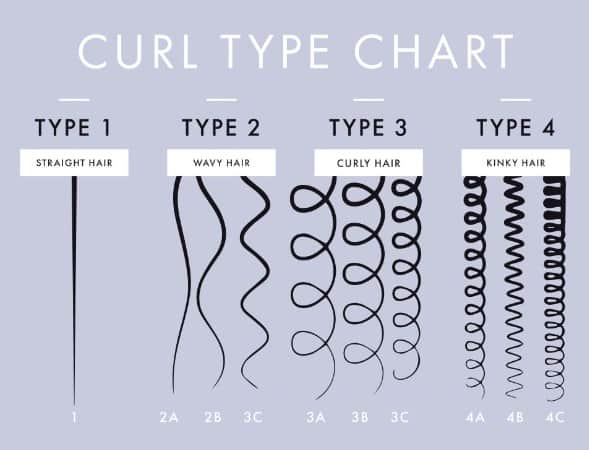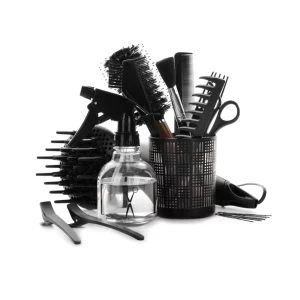There are several different types of natural African hair, each of these hair types has its own unique characteristics and requires specific care and styling techniques. It’s important to understand your hair type in order to properly care for it and achieve the desired style.
Table of Contents
8 Different African Hair Types Defined
Natural african hair is either Curly or Kinky, type 3 or type 4. Type 3 hair is characterized by a medium texture and is often curly or wavy. Type 4 hair is characterized by a coarser texture and is often highly curly or kinky. It’s important to note that the classification of hair types is not an exact science, and hair can have characteristics of multiple types. Some people may have hair that is a combination of type 3 and type 4, or hair that falls somewhere in between the two types.
Characteristics of Type 3 and Type 4 Hair Types
Type 3 hair: A medium texture and is often curly or wavy.
Type 4 hair: Coarser texture and is often highly curly or kinky.
Type 3A hair: Loose, springy curls that are about the size of a pencil.
Type 3B hair: Curls that are a bit tighter and more defined than type 3A hair.
Type 3C hair: Very tight curls that are about the size of a straw.
Type 4A hair: Tight curls that are coiled and have a wiry texture.
Type 4B hair: Curls that are very tight and have a zig-zag pattern.
Type 4C hair: Curls that are very tight and have a very fine texture.

Tips for caring for type 3 and type 4 hair
- Moisturize: Both type 3 and type 4 hair are prone to dryness, so it’s important to keep your hair moisturized. Use a leave-in conditioner or hair oil to keep your hair soft and hydrated.
- Use a sulfate-free shampoo: Sulfates can strip the hair of its natural oils, leaving it dry and brittle. Use a sulfate-free shampoo to help keep your hair moisturized.
- Condition regularly: Conditioning your hair will help to keep it soft and moisturized. Look for a conditioner that is rich in ingredients like shea butter, coconut oil, and olive oil.
- Avoid heat styling: Heat styling can damage your hair, so try to avoid using heat-based styling tools as much as possible. If you do need to use heat, be sure to use a heat protectant product to help prevent damage.
- Use a wide-tooth comb: A wide-tooth comb can help to gently detangle your hair without causing breakage.
- Use a satin or silk pillowcase: Cotton pillowcases can cause friction on the hair, leading to breakage. Using a satin or silk pillowcase can help to reduce breakage and keep your hair healthy.
- Deep condition regularly: Deep conditioning your hair can help to nourish and moisturize it, helping to keep it healthy and strong.
- Protect your hair at night: To help prevent breakage, consider braiding your hair or using a satin or silk headscarf to protect it while you sleep.
- Trim your hair regularly: Trimming your hair regularly can help to keep it healthy and prevent split ends.
- Experiment with different styles: Try different hairstyles to find what works best for your hair type and texture.
- Be gentle: Be gentle when combing, brushing and styling your hair, being too rough can cause breakage.
It’s essential to understand that everyone’s hair is unique, so it might require some trial and error to discover the optimal products and methods. Incorporating protective hairstyles that entail different types of braiding is one of the several ways to care for your natural African hair.
Continue reading our blog to learn more about the diverse styles of braiding, twisting, and locking that can assist you in preserving a healthy mane.
Stay Beautiful!


